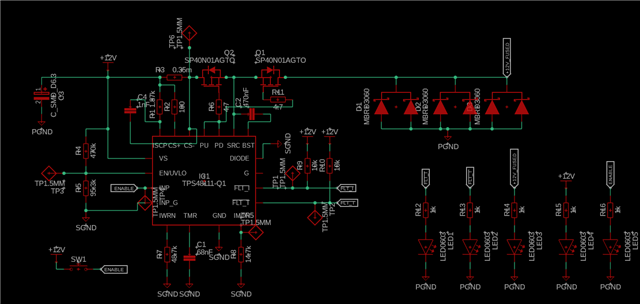Other Parts Discussed in Thread: TPS4810-Q1
Tool/software:
I am having trouble using the TPS4811. The end goal is to drive an inductive load, but on the bench I found that during a short circuit test, the TPS4811 let out the magic smoke!
Previous to failing, I was switching in 6A of resistive load without any problems.
The device setting components (calculated using the supplied design spreadsheet) should translate to 70A overcurrent protection and 100A short circuit. The loads required can pull up to 50A, but are only ever used for a few seconds at a time.
12V normal input, but components should allow it to work down to 7V.
I have found that the R4/R5 divider resistors have blown up as well.
Any ideas about why the short circuit caused the components to fail instead of tripping would be great.


